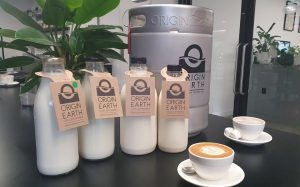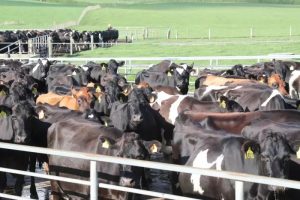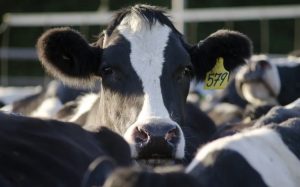
The Global Dairy Trade price index dropped 1 per cent to 1564 at the overnight auction. That follows a 0.9 per cent decline at the previous bimonthly auction.
Dairy prices have risen steeply at auction this year, pushing the index to record levels, as tight supply underpins demand.
However at the latest auction, demand weakened from China, the world’s largest dairy market, as the country puts major cities into lockdown to try and contain an outbreak of Covid-19, causing disruption to supply chains and prompting local dairy processors to increase production of milk powder, denting demand for imported product.
“Internal logistics are heavily interrupted within China, meaning more raw milk is needed to be diverted into dry powders away from liquid milk products, meaning that the local supply of milk powders is now slightly distorted from what was previously expected,” said NZX dairy insights manager Stuart Davison.
North Asian buyers almost halved their whole milk powder purchases compared with the previous auction, while South East Asian/Oceania and African bidders bought more, he said.
“Overall, the same market fundamentals remain in place, global demand is strong, and supply continues to struggle,” Davison said.
The average price for whole milk powder, which has the most impact on what farmers are paid, fell 1.5 per cent to US$4532 (NZ$6529) a tonne.
Davison said prices weakened as there was an oversupply of regular whole milk powder.
Skim milk powder, also a key driver of the milk price paid to farmers, rose 1 per cent to US$4599/t.
Davison said demand remained strong for skim milk powder, with buyers seeking 3.5 times more product than was on offer at the auction.
The latest auction comes as Northern Hemisphere milk production nears its peak. Still, milk supply in Europe is expected to remain under pressure as the war in Ukraine disrupts fertiliser and grain markets.
Butter slipped 0.6 per cent to US$6,891/t, cheddar rose 2.7 per cent to a record US$6,472/t, anhydrous milkfat fell 2.5 per cent to US$6,908/t, lactose fell 0.6 per cent to US$1,598/t and buttermilk powder rose 6.3 per cent to US4,461/t.
Davison said the latest auction result may put some pressure on forecasts for milk prices for farmers for this season and next season.
In February, Fonterra raised its forecast milk payment to farmers for this season for a fourth time to between $9.30 and $9.90 per kilogram of milk solids. The $9.60 per kgMS midpoint, which farmers are paid off, is the highest since Fonterra was formed in 2001.
Last month, Fonterra chief executive Miles Hurrell said the country’s largest milk processor was “very comfortable at this point in time” with its milk price forecast for this season.
“We see no change to that at this stage in the season,” Hurrell said when announcing the co-operative’s first-half profit. “In the medium term, we expect the supply and demand outlook to go some way towards underpinning a strong milk price next season.”
New Zealand milk production generally peaks around November and the season runs until the end of May.
As the country’s largest dairy company, Fonterra’s milk payment sets the benchmark for its competitors.























